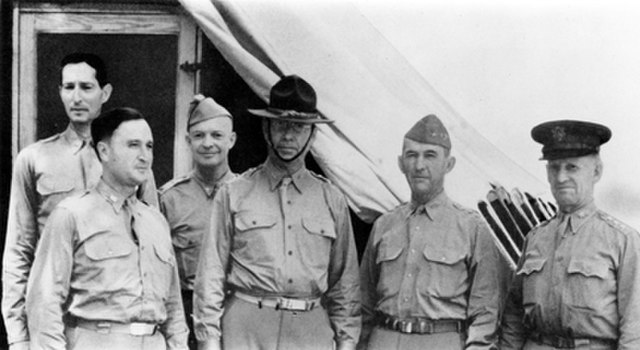The Battle of Luzon was a land battle of the Pacific Theater of Operations of World War II by the Allied forces of the U.S., its colony the Philippines, and allies against forces of the Empire of Japan. The battle resulted in a U.S. and Filipino victory. The Allies had taken control of all strategically and economically important locations of Luzon by March 1945, although pockets of Japanese resistance held out in the mountains until the unconditional surrender of Japan. While not the highest in U.S. casualties, it is the highest net casualty battle U.S. forces fought in World War II, with 192,000 to 217,000 Japanese combatants dead, 8,000 American combatants killed, and over 150,000 Filipinos, overwhelmingly civilians who were murdered by Japanese forces, mainly during the Manila massacre of February 1945.

A squad leader points out a suspected Japanese position at the edge of Balete Pass, near Baguio, where troops of the 25th Infantry Division are in fierce combat with Japanese forces. 23 March 1945.
Gen. Douglas MacArthur
Vice Adm. Daniel E. Barbey
Major Gen. Innis P. Swift
Walter Krueger was an American soldier and general officer in the first half of the 20th century. He commanded the Sixth United States Army in the South West Pacific Area during World War II. He rose from the rank of private to general in the United States Army.
Walter Krueger
Walter Krueger, pictured here as a captain, sometime before or after World War I,
Lieutenant General Herbert J. Brees (right) pins the third star on his successor in command of the Third Army, Walter Krueger (left), on 17 May 1941, in San Antonio, Texas.
Senior commanders and their chiefs of staff during the Louisiana maneuvers. Left to right: Mark Clark, Harry J. Malony, Dwight D. Eisenhower, Ben Lear, Walter Krueger, Lesley J. McNair








